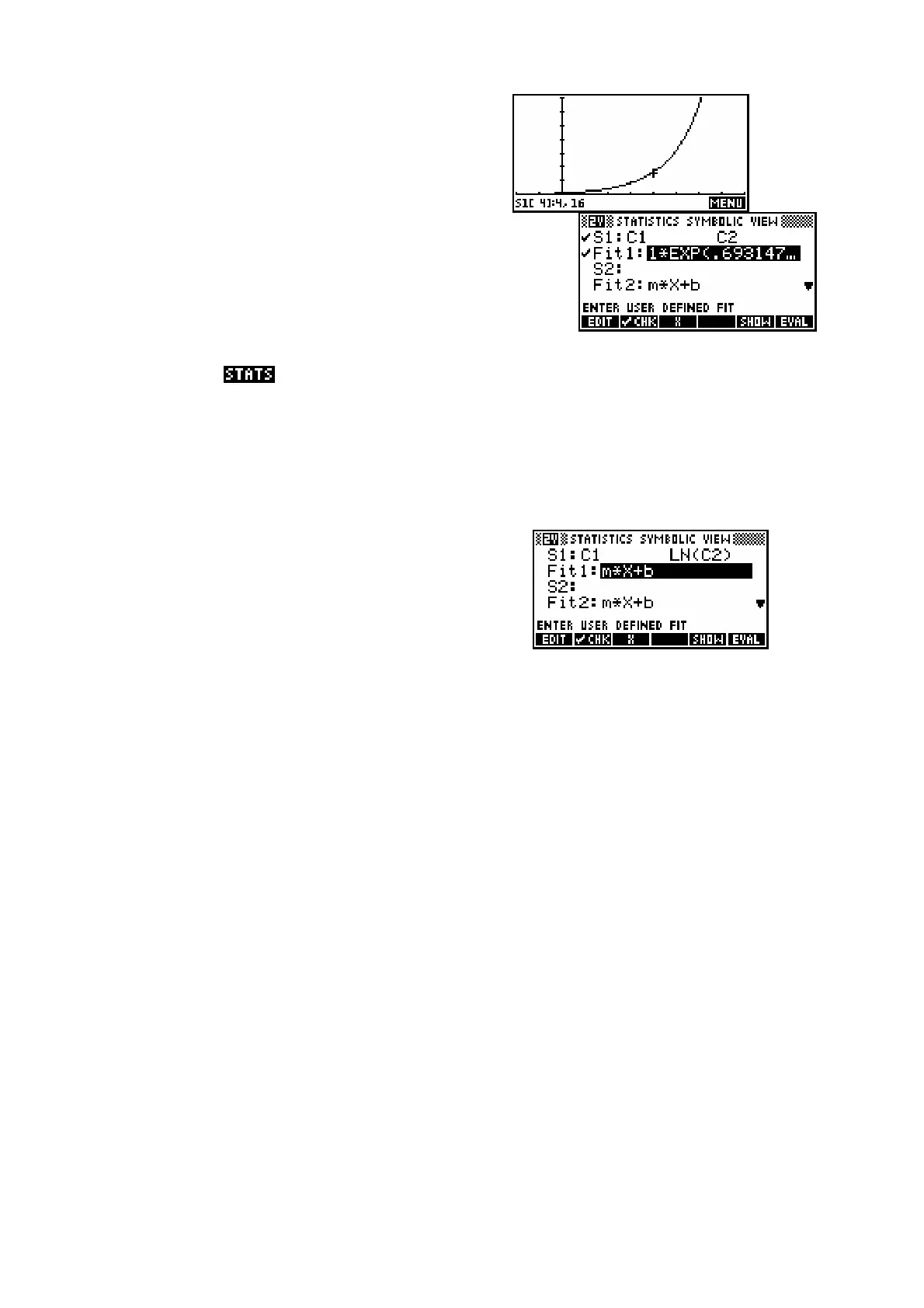142
The curve which results in the PLOT view is
exactly what is required and the equation
comes out as 1 (0.693147 )YEXP X=⋅
This “EXP(“ is the calculator’s notation for
0.693147
1
X
Ye=⋅
which then changes to 2
X
Y
.
Checking the key shows that the correlation is unchanged at 0.9058
even when the new equation clearly fits the data perfectly.
The value of RelErr on the other hand has changed from 0.09256 for the
linear fit, to a value of zero for the exponential model.
The alternative to using RelErr is to graph
column C1 against ln(C2) which also
straightens the data.
‘Linearizing’ will cause problems if some of the data points are outside the
domain of the function you use, such as negative values in a log function.
On the other hand, you have far more control if you are able to choose the
exact function. For example, if you had a set of data which was derived from
cooling temperatures then you would probably find that it was asymptotic to
room temperature rather than the x-axis. The built-in equation assumes that
the data is asymptotic to the x axis and would not give a good fit. You could
get better results by subtracting a constant from the whole column first.

